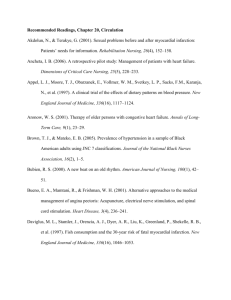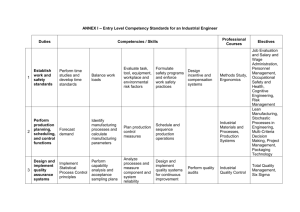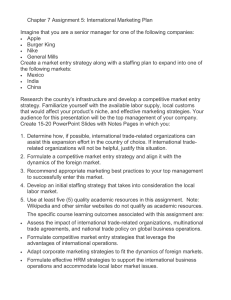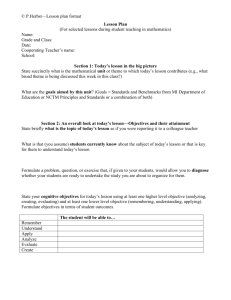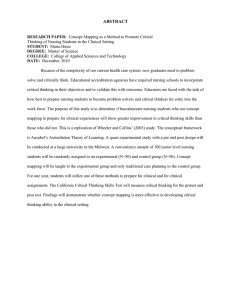P a g e 1
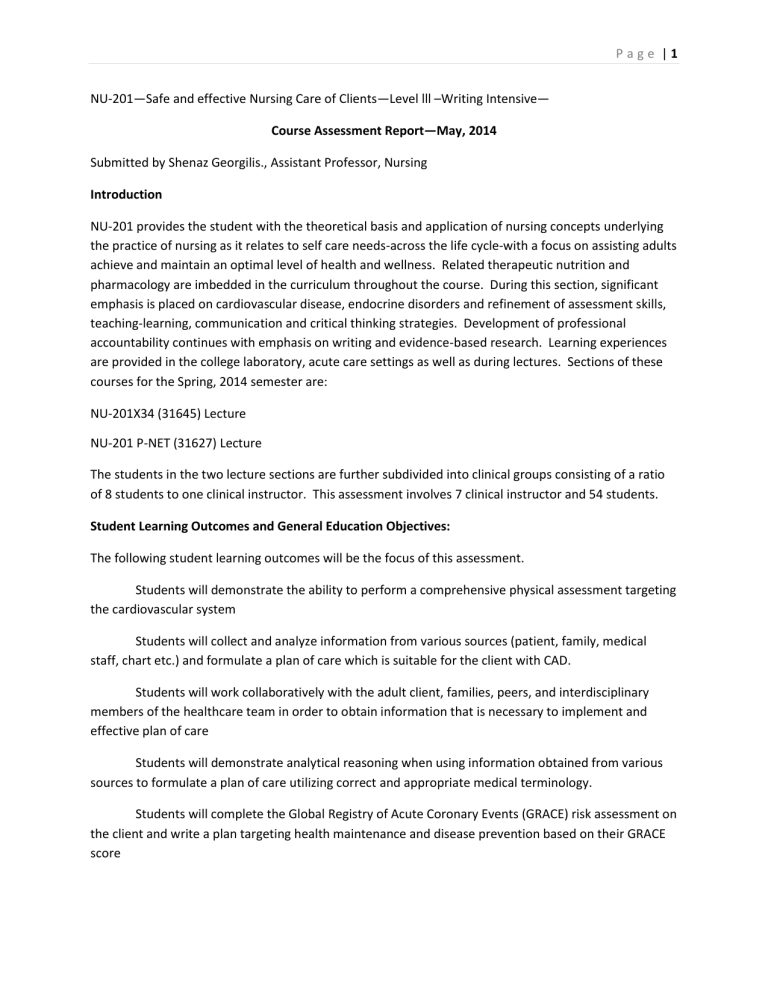
P a g e | 1
NU-201—Safe and effective Nursing Care of Clients—Level lll –Writing Intensive—
Course Assessment Report—May, 2014
Submitted by Shenaz Georgilis., Assistant Professor, Nursing
Introduction
NU-201 provides the student with the theoretical basis and application of nursing concepts underlying the practice of nursing as it relates to self care needs-across the life cycle-with a focus on assisting adults achieve and maintain an optimal level of health and wellness. Related therapeutic nutrition and pharmacology are imbedded in the curriculum throughout the course. During this section, significant emphasis is placed on cardiovascular disease, endocrine disorders and refinement of assessment skills, teaching-learning, communication and critical thinking strategies. Development of professional accountability continues with emphasis on writing and evidence-based research. Learning experiences are provided in the college laboratory, acute care settings as well as during lectures. Sections of these courses for the Spring, 2014 semester are:
NU-201X34 (31645) Lecture
NU-201 P-NET (31627) Lecture
The students in the two lecture sections are further subdivided into clinical groups consisting of a ratio of 8 students to one clinical instructor. This assessment involves 7 clinical instructor and 54 students.
Student Learning Outcomes and General Education Objectives:
The following student learning outcomes will be the focus of this assessment.
Students will demonstrate the ability to perform a comprehensive physical assessment targeting the cardiovascular system
Students will collect and analyze information from various sources (patient, family, medical staff, chart etc.) and formulate a plan of care which is suitable for the client with CAD.
Students will work collaboratively with the adult client, families, peers, and interdisciplinary members of the healthcare team in order to obtain information that is necessary to implement and effective plan of care
Students will demonstrate analytical reasoning when using information obtained from various sources to formulate a plan of care utilizing correct and appropriate medical terminology.
Students will complete the Global Registry of Acute Coronary Events (GRACE) risk assessment on the client and write a plan targeting health maintenance and disease prevention based on their GRACE score
P a g e | 2
Each student learning outcomes have been further subdivided into very specific, measurable, and observable sections so that faculty can evaluate the student’s performance.
Students will demonstrate the ability to perform a comprehensive physical assessment targeting the cardiovascular system.
Conduct a physical assessment on a client
Appropriately identifying the anatomical landmarks for the apical pulse
Correctly counting the pulse rate for a one minute period and record it
Describing the pulse rate, quality, and regularity
Students will collect and analyze information from various sources (patient, family, medical staff, chart etc.) and formulate a plan of care which is suitable for the client with CAD.
Conduct a client interview which focuses on relevant past medical history, HPI, family and social history which will have an impact on cardiovascular health
Collect objective data from the HER that is likely to impact current health status
Describe how this information positively or negatively impact current cardiovascular health
Students will work collaboratively with the adult client, families, peers, and interdisciplinary members of the healthcare team in order to obtain information that is necessary to implement and effective plan of care.
Identify the role of the health care team members who will impact care provided and client care outcomes
Demonstrate effective communication with other team members in order to achieve positive client outcomes
Incorporate information from evidence-based research into the client care planning
Students will demonstrate analytical reasoning when using information obtained from various sources to formulate a plan of care utilizing correct and appropriate medical terminology.
Collect and compare all relevant laboratory values
Document implications of abnormal values
Match up different values of different tests in order to formulate possible causes of symptoms
P a g e | 3
2,9
1,7
2
4
Utilize a wider range of acceptable medical terminology based on knowledge gained during this course.
Students will complete the Global Registry of Acute Coronary Events (GRACE) risk assessment on the client and write a plan targeting health maintenance and disease prevention based on their
GRACE score.
Students will access the GRACE scoring criterion from the link below and complete the information required to calculate a risk score.
Hhp://www.outcomes-umassmed.org/grace/acs risk/acs risk content.html
After the score is calculated, the student will complete a plan of care that is tailored to the needs of the client based on their assessment and GRACE risk score.
The above student learning outcomes are in line with the General Education objectives as outlined below:
General Education Objectives
5
NU-201 Student Learning Outcome
Students will demonstrate the ability to perform a comprehensive physical assessment targeting the cardiovascular system
Students will collect and analyze information from various sources (patient, family, medical staff, chart etc.) and formulate a plan of care which is suitable for the client with CAD.
Students will work collaboratively with the adult client, families, peers, and interdisciplinary members of the healthcare team in order to obtain information that is necessary to implement and effective plan of care
Students will demonstrate analytical reasoning when using information obtained from various sources to formulate a plan of care utilizing correct and appropriate medical terminology.
Students will complete the Global Registry of
Acute Coronary Events (GRACE) risk assessment on the client and write a plan targeting health maintenance and disease prevention based on their GRACE score
P a g e | 4
Assessment
Student Assignment for Assessment
Student were assigned to complete the Global Registry of Acute Coronary Events (GRACE) CV risk assessment and then formulate a plan for prevention of future CV events based on data collected by the student. This assignment was in lieu of a weekly clinical writing assignment and was to be completed based on a client that the student had been assigned to care for during their hospital rotation. Students were provided the link to the GRACE CV risk assessment and it was also posted on blackboard.
Evidence
The student CV risk assessment in each NU-201 course were collected and evaluated using the Nursing
Care Plan Grading Rubric. See attached. This is the same rubric used to evaluate their weekly clinical writing assignment.
Analysis and Summary.
The Nursing Care Plan Grading Rubric (see appendix A) was used to grade this assignment. Components of this rubric are as follows:
Appendix A-Nursing Care Plan Grading Rubric. Learning outcomes-CV assessment
Learning
Outcomes
Organization and completeness
Critical thinking in the nursing process
26
Use of references
23 students will demonstrate the ability to perform a comprehensive physical assessment targeting the cardiovascular system” students will collect and analyze information from various sources
(patient, family, medical staff,
27
32 18 10
Written presentation
24
9
P a g e | 5 chart etc.) and formulate a plan of care which is suitable for the patient.” students will demonstrate analytical reasoning when using information obtained from various sources to formulate a plan of care utilizing correct and appropriate medical terminology” students will demonstrate analytical reasoning when using information obtained from various sources to formulate a plan of care utilizing correct and appropriate medical terminology”
22
28
18
15
16
11
20
27
Student Learning Outcome : “students will demonstrate the ability to perform a comprehensive physical assessment targeting the cardiovascular system” was further subdivided into the following subcategories: Conduct a physical assessment, appropriately identifying the anatomical landmarks for the apical pulse, correctly counting the pulse rate for a one minute period and describing the pulse rate, quality and regularity. Students were able to perform a focus physical assessment, however they did not quality the pulse, in terms of quality and rhythm in their writing. This is an important and essential component for them to be able to perform.
The second and third Student learning outcomes “ Students will collect and analyze information from various sources (patient, family, medical staff, chart etc.) and formulate a plan of care which is suitable for the patient.” And “students will work collaboratively with the adult client, families, peers, and
P a g e | 6 interdisciplinary members of the health care team in order to obtain information that is necessary to develop and implement an effective plan of care “. Overall the students were able to collect data utilizing multiple sources to formulate their plan and did fairly well with this learning outcome.
The fourth and fifth learning outcomes “ students will demonstrate analytical reasoning when using information obtained from various sources to formulate a plan of care utilizing correct and appropriate medical terminology” and “Students will complete the Global Registry of Acute Coronary Events
(GRACE) risk assessment on the client and write a plan targeting health maintenance and disease prevention based on their GRACE score” were the most challenging for the nursing students. Failure to properly site references and tailoring treatment plans based on the individual patient health needs as it relates to cardiovascular health was an area that needs particular attention.
Assessment results
With regards to student performance in the subcategories of the student learning outcomes, it was identified that students needed additional support in the areas of critical thinking in the nursing process, using collected information to tailor patient care geared to improve patient outcomes and utilizing evidence based research information. It was clear that nursing students need more support and learning opportunities when it comes to noting citations and references. Students need more direction when looking at the source of the information that they are using. They need more support and direction when looking at information on the internet and specifically before reading and making quotations. This is a critical component in nursing since information changes often based on ongoing research findings. At the next faculty meeting scheduled for August, 2014 the NU201 faculty will discuss ways to improve and address the student need as to critical thinking activities and resources that are valid for nursing references. The Grading rubric for the Nursing Care Plan also need to be fined tuned.
